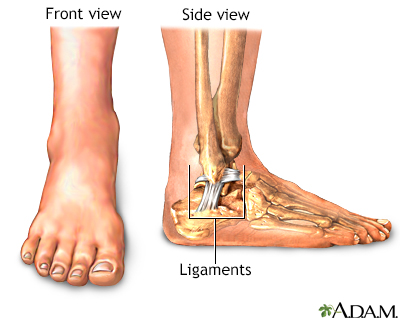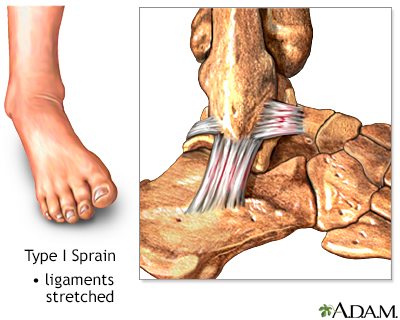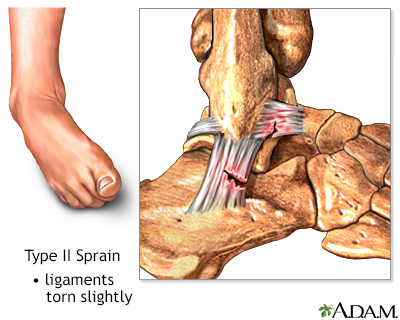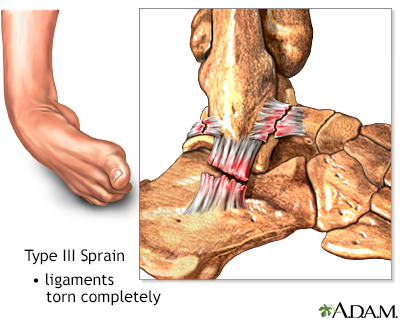Health exams for: #AGEGROUP#
The following exams, tests, and procedures are recommended for #AGEGROUPLOWER#.#FEMALETEXT#
Select a link from the list below to learn how and why each test is performed, as well how to prepare for it.

The following exams, tests, and procedures are recommended for #AGEGROUPLOWER#.#FEMALETEXT#
Select a link from the list below to learn how and why each test is performed, as well how to prepare for it.




The ankle joint connects the foot with the leg. The ankle joint allows the foot to move upward and downward and in an inward and outward motion. Muscles, tendons, and ligaments surround the ankle providing the stability the ankle joint needs for walking and running.
The ankle joint connects the foot with the leg. The ankle joint allows the foot to move upward and downward and in an inward and outward motion. Musc...
The most common way the ankle can be injured is by an ankle sprain. When an ankle is sprained ligaments on the ankle are either stretched, partially torn or completely torn. The most common type of sprain is an inversion injury, where the foot is rotated inward. Ankle sprains can range from mild, to moderate, and severe. Type 1 ankle sprain is a mild sprain. It occurs when the ligaments have been stretched or torn minimally.
The most common way the ankle can be injured is by an ankle sprain. When an ankle is sprained ligaments on the ankle are either stretched, partially ...
Type II ankle sprain is a moderate level of sprain. It occurs when some of the fibers of the ligaments are torn completely.
Type II ankle sprain is a moderate level of sprain. It occurs when some of the fibers of the ligaments are torn completely.
Type III ankle sprain is the most severe ankle sprain. It occurs when the entire ligament is torn and there is great instability of the ankle joint.
Type III ankle sprain is the most severe ankle sprain. It occurs when the entire ligament is torn and there is great instability of the ankle joint.
Review Date: 4/27/2023
Reviewed By: Linda J. Vorvick, MD, Clinical Professor, Department of Family Medicine, UW Medicine, School of Medicine, University of Washington, Seattle, WA. Also reviewed by David C. Dugdale, MD, Medical Director, Brenda Conaway, Editorial Director, and the A.D.A.M. Editorial team.



